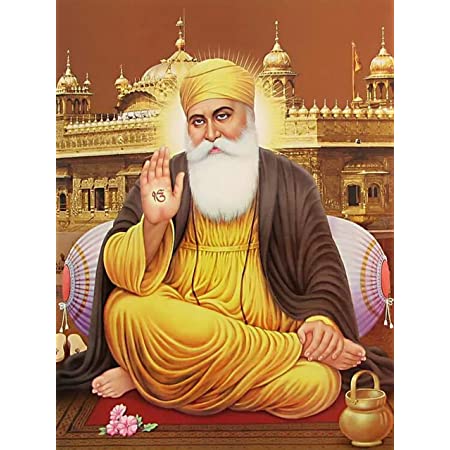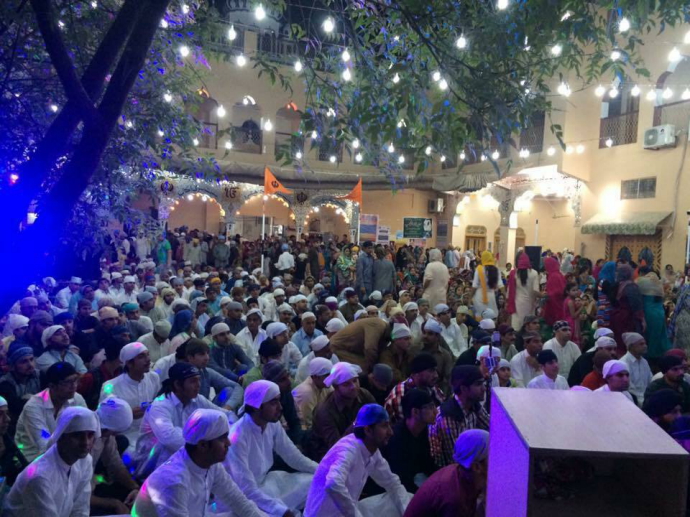
Dispersed over different parts of India like other Partition migrants from Sindh, the Sindhi Sikhs are an urban population. As migrants they lived close to Sindhi Hindus in refugee camps and continue to have social and business transactions with them.
By Rita Kothari and Jasbirkaur Thadhani
[Authors’ Note: This paper argues for the inclusion of ‘Sindhi Sikhs’—a minor group in terms of religion, language and number—into the archives of Partition, Sindh and Sikh scholarship. Terming this group as the ‘missing people’, we draw attention to contexts that might have made them slip through the cracks of the three archives. At a more fundamental level, the paper critiques the processes by which strait-jacketed definitions of a ‘Hindu’ or a ‘Sikh’ make invisible those who, in the logic of modern nations, appear to have oxymoronic identities. What role did Partition play in this matter? Did Partition cause further ruptures, and what kinds of negotiations did the Sindhi Sikhs undertake during and after Partition?]
The Elusive Nature of Origins
In the process of working on this paper, a question that assailed us (but that was mired in obscurity and speculation) was ‘when’ did Sikhism take root in Sindh? We are using this section to foreground not only the difficulty of providing a historically accurate answer, but also, to a certain extent, the fallacious assumptions made in asking the question itself. A subset of the same question, appearing rather spectrally, is also the issue of conversion. Perhaps the term ‘conversion’ is misleading given how many Hindus embrace partially or fully the teachings of Sikhism with or without formalizing the relationship. ‘Conversion’ implies a specific moment and a complete transformation of identity from one to the other, neither of which are easily available in identifiable form in the South Asian region.
We discovered at a very early stage of our research that the term ‘conversion ‘was offensive to our respondents and interlocutors. It smacked of illegitimacy, that is to say that converts were not originally Sikhs, and so carried association with stigmatized castes. We therefore asked some respondents when Sikhism began in Sindh, or when they became Sardars. However, at best, this question too was met with bewilderment—the answers ranging from legends dating back to the seventeenth century to events in the twentieth century.
More importantly, Hindu and Sikh practices in many households were not clearly demarcated and the regions of Punjab and Sindh bled into each other, as did the boundaries of languages. Through valuable scholarship, the historian Himadri Banerjee has drawn attention to Sikh minorities in the regions of Assam and West Bengal. Like the Sindhi Sikhs, the minorities Banerjee chose to focus upon have also escaped the radar of scholarship. How-ever, his research has been able to pin down a historical moment that brought the Asomiya and Kolkata Sikhs to the eastern part of the country. Unlike them, there does not seem to be one single moment that explains how Sikhism came into Sindh. Perhaps even to ask this question would be to assume the validity of the present-day understanding of ‘Punjab’ and ‘Sindh’ as two entirely separate regions. We would like to underscore that there were multiple impulses that must have strengthened the intimacy between Sindh and Punjab, and Sikhism may be one of its outcomes. Mathew Cook, for example, argues that many Punjabis migrated to Sindh during the eighteenth century and were eventually absorbed into the Lohana community, an all-encompassing community that includes the vast majority of the Hindus of Sindh. In a similar vein, Scott Levi argues that many firms in Multan in Punjab moved their bases to Shikarpur in Upper Sindh following geopolitical changes surrounding the rise of the Durrani regime in Afghanistan in the mid eighteenth century. There are also legends surrounding Guru Gobind Singh’s recruitment of a new set of believers from Sindh in the seventeenth century. The colonial administrator John Malcolm confirmed this story, suggesting that it was ‘the only means by which he could ever hope to oppose the Muhammedan government with success’.
One of our respondents, Hotusingh Guler, was asked: ‘Tawahaan Sardar kadhinthiya?’(‘When did you become a Sardar?’). The question met with some surprise: Kadhinthiya? When do you mean? Well, I suppose, at the time of Banda Bahadur. Baba Bandar, you have heard of him? He was a disciple of Guru Gobind Singh. This must be in Punjab. Our ancestors used to live in Multan. Later we must have come along the Indus for work, and settled in Nawabshah, which is not far from Punjab. By contrast, another respondent, Ram Gulrajani, traced his Sikh identity to his maternal great-grandfather in the nineteenth century.
According to him: My mother’s Nana was a turbaned Sikh from Punjab, who settled down in Sehwan Shah. His daughter, as in my maternal grandmother, was married into [a Hindu] Khanchandani family from Hyderabad. She was a Sikh to the core, and so was my mother. My mother had four sons, of which I am the only one who was made a Sikh. My brothers are Hindu.
Here Gulrajani affirmed a common practice among Hindu families in both Sindh and Punjab whereby one of the children (usually the eldest) was ‘gurdinno’ or ‘given to the Guru’. In such a scenario, the atmosphere at home was a mixture of Hindu and Sikh practices, leaning sometimes more towards one than the other. Gulrajani’s account is instructive in this regard:
Both my grandmothers stayed with us. There was Guru Granth Sahib at home (till my mother was alive) and we all grew up reciting Gurbani. We did go to temples and we did hear a lot of stories of Hindu gods and goddesses but our prayers have always been and continue to be from the Gurbani. My elder brother till today recites ‘Japji Sahib’ for 25 to 30 minutes before breakfast. At Tirupati in the presence of the deity, he recites ‘Japji Sahib’ because none of us know any other prayers. All death ceremonies in my family are carried out as per Sikh rites. My sisters married into non-Sindhi Hindu families. Two of them are no more and both were cremated according to Sikh rites and their follow-up ceremonies too were carried out as per Sikh rites. My father too was cremated on the banks of [the] Ganges at Patna but all his follow-up rites were carried out in Patna Sahib Gurudwara where Guru Gobind Singh was born. I was married in a gurudwara in Hyderabad (now in Telangana) to a Sindhi Hindu girl, who after marriage only recites ‘Japji Sahib’ and ‘Sukhmani Sahib’ because she too never learnt any Hindu prayers. Mine is a family where Sikhism is ingrained in our subconscious although only I call myself a Sikh while all [the] others are Hindus. No one knows any Hindu prayers, although we do keep hearing and enjoying both bhajans and Gurbani Shabd Kirtan. The most common historical document used by Hindu Sindhis, namely Berumal Advani’s Sindh Jay Hindun Jee Tarikh (History of the Hindus in Sindh), does not mention a specific period to mark the beginning of Sikhism in Sindh. Whether the origin can be determined by the establishment of a gurudwara, or by the receiving of the first Guru Granth Sahib, or of baptism effected under Guru Gobind Singh’s drive towards the creation of a Khalsa identity, or even earlier when traders and pilgrims from Sindh encountered the teachings of Guru Nanak in the Indus region, is difficult to decide. How-ever, it is possible to point to influential figures in the history of Sikhism in Sindh; a recur-ring name is that of Baba Tharia Singh. The dissemination of Sikhism through Tharia Singh is now a part of the lore circulating among his (ever) increasing followers, even in post-Partition India.

Leaving Sindh
In the months preceding Partition, Sindh was relatively calm. Several accounts of this period tell us that although the lines dividing Hindus and Muslims sharpened somewhat in twentieth-century Sindh, it was difficult to say in July and August 1947 whether Sindh would meet the fate of its neighbor, Punjab. The shadow of Punjab hovered over Sindh, particularly on its Sikh community, who, in the perceptions of the perpetrators of violence, were no different from the Sikhs of Punjab. Although it is difficult to estimate the extent of the violence, Bhavnani observes that ‘Sikhs in Sindh had been targeted (by Muslims) for violence because Punjabi Sikhs had played a significant role in the communal violence in East Punjab’. Furthermore, we can see in the narratives that follow that the migration of Sikhs from Sindh was characterized by greater urgency and terror than the Sindhi Hindu narratives discussed in the Introduction to this article. For safety, the Sindhi Sikhs left in large groups, fearing the wrath their turbans and kirpans (short swords) would bring down on them. They took the same routes out as the Sindhi Hindus, arriving in India via the train from Hyderabad to Rajasthan, or via ship from Karachi to the ports of Bombay and Gujarat. Like the Sindhi Hindu refugees, they lived in camps provided by the states of Maharashtra, Gujarat and Rajasthan, and in Delhi. However, we also see further migration later in the 1950s for reasons of economic opportunity, or by girls who underwent quick marriages and were sent off safely to their new homes.
__________________
 Rita Kothari is Professor of English at Ashoka University, Delhi. She is one of India’s most distinguished translation scholars and has translated major literary works into English. Rita has worked extensively on borders and communities; Partition and identity especially in the western region of India. She is the author of many books and articles on the Sindhi community.
Rita Kothari is Professor of English at Ashoka University, Delhi. She is one of India’s most distinguished translation scholars and has translated major literary works into English. Rita has worked extensively on borders and communities; Partition and identity especially in the western region of India. She is the author of many books and articles on the Sindhi community.
Courtesy: Courtesy: Researchgate / South Asia Journal of South Asian Studies
Click here for Part-I, Part-II